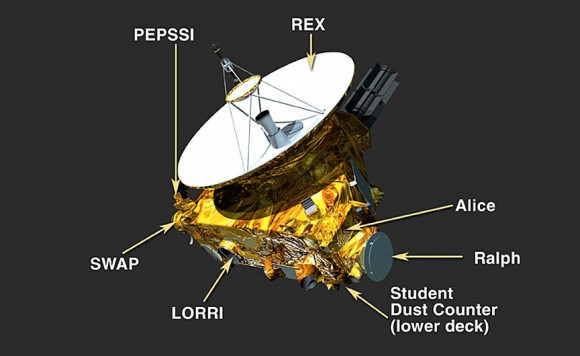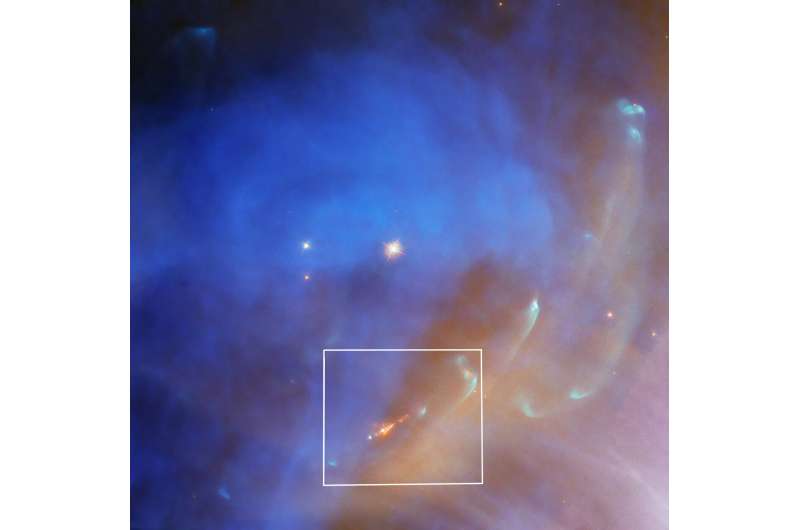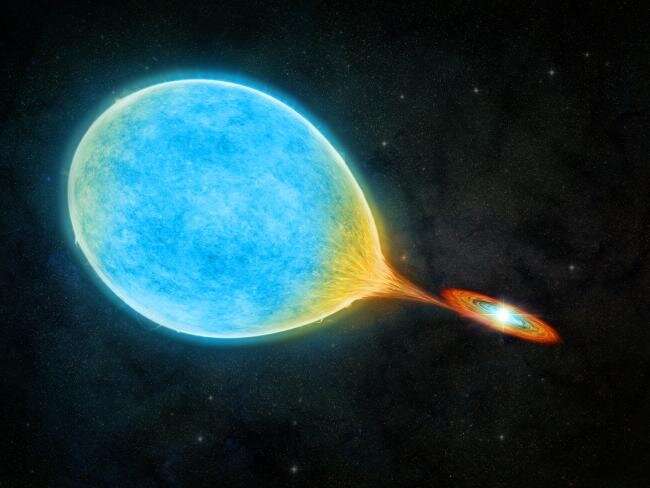Space Thread
Previous 1 ... 200 201 202 203 204 205 206 ... 236 Next
DrCaleb @ Tue Nov 23, 2021 7:13 am
An “incident” with the James Webb Space Telescope has occurred
$1:
"Technicians were preparing to attach Webb to the launch vehicle adapter, which is used to integrate the observatory with the upper stage of the Ariane 5 rocket," NASA said in a blog post. "A sudden, unplanned release of a clamp band—which secures Webb to the launch vehicle adapter—caused a vibration throughout the observatory."
raydan @ Tue Nov 23, 2021 12:09 pm
DrCaleb DrCaleb:
An “incident” with the James Webb Space Telescope has occurred
$1:
"Technicians were preparing to attach Webb to the launch vehicle adapter, which is used to integrate the observatory with the upper stage of the Ariane 5 rocket," NASA said in a blog post. "A sudden, unplanned release of a clamp band—which secures Webb to the launch vehicle adapter—caused a vibration throughout the observatory."
"sudden, unplanned release of a clamp band" = "someone screwed up and hit the wrong button" in plain English
DrCaleb @ Tue Nov 23, 2021 12:36 pm
raydan raydan:
DrCaleb DrCaleb:
An “incident” with the James Webb Space Telescope has occurred
$1:
"Technicians were preparing to attach Webb to the launch vehicle adapter, which is used to integrate the observatory with the upper stage of the Ariane 5 rocket," NASA said in a blog post. "A sudden, unplanned release of a clamp band—which secures Webb to the launch vehicle adapter—caused a vibration throughout the observatory."
"sudden, unplanned release of a clamp band" = "someone screwed up and hit the wrong button" in plain English
"Someone didn't calculate the weight of the load properly, and the sling broke when it was being hoisted".
DrCaleb @ Wed Nov 24, 2021 10:32 am
DrCaleb DrCaleb:
"Someone didn't calculate the weight of the load properly, and the sling broke when it was being hoisted".
DrCaleb @ Wed Nov 24, 2021 10:33 am
$1:
Once New Horizons was out Beyond Pluto, it Could Finally Measure the Brightness of the Milky Way

Posted on November 23, 2021 by Nancy Atkinson
Once New Horizons was out Beyond Pluto, it Could Finally Measure the Brightness of the Milky Way
The New Horizons spacecraft has been speeding away from Earth since it launched in 2006. Scientists using the Alice UV imaging spectrograph on board New Horizons, have been patiently but sporadically gathering data during those 15 years, but also waiting to get far enough away from the Sun to make a specific measurement: the brightness of the Lyman-alpha background of the Milky Way. Until now, this had never been measured accurately.
“The farther we moved away from the Sun, the less we were blinded by the solar component of the Lyman-alpha background,” said New Horizons team member Dr. Randy Gladstone, author of a new paper published in the Astronomical Journal. “This has been something that’s been guessed at by astronomers for decades. Now we have a much more precise number.”
Gladstone and his team used Alice to make the observations of the Lyman-alpha background (Ly?) several times during the mission: Three times during the cruise to Pluto, another observation just one month prior to the mission’s flyby of Pluto, as well as one day after, and five times since then, out to just over 47 au from the Sun.
What Alice found is that the galactic component of the Lyman-alpha background is about 20 times less bright than the Lyman-alpha background is near Earth.


Posted on November 23, 2021 by Nancy Atkinson
Once New Horizons was out Beyond Pluto, it Could Finally Measure the Brightness of the Milky Way
The New Horizons spacecraft has been speeding away from Earth since it launched in 2006. Scientists using the Alice UV imaging spectrograph on board New Horizons, have been patiently but sporadically gathering data during those 15 years, but also waiting to get far enough away from the Sun to make a specific measurement: the brightness of the Lyman-alpha background of the Milky Way. Until now, this had never been measured accurately.
“The farther we moved away from the Sun, the less we were blinded by the solar component of the Lyman-alpha background,” said New Horizons team member Dr. Randy Gladstone, author of a new paper published in the Astronomical Journal. “This has been something that’s been guessed at by astronomers for decades. Now we have a much more precise number.”
Gladstone and his team used Alice to make the observations of the Lyman-alpha background (Ly?) several times during the mission: Three times during the cruise to Pluto, another observation just one month prior to the mission’s flyby of Pluto, as well as one day after, and five times since then, out to just over 47 au from the Sun.
What Alice found is that the galactic component of the Lyman-alpha background is about 20 times less bright than the Lyman-alpha background is near Earth.

https://www.universetoday.com/153394/on ... milky-way/
DrCaleb @ Thu Nov 25, 2021 10:16 am
$1:
High-speed propeller star is fastest spinning confirmed white dwarf
A white dwarf star that completes a full rotation once every 25 seconds is the fastest spinning confirmed white dwarf, according to a team of astronomers from the Universities of Sheffield and Warwick.
They have established the spin period of the star for the first time, confirming it as an extremely rare example of a magnetic propeller system: the white dwarf is pulling gaseous plasma from a nearby companion star and flinging it into space at around 3000 kilometers per second.
Reported today in the journal Monthly Notices of the Royal Astronomical Society, it is only the second magnetic propeller white dwarf to have been identified in over 70 years thanks to a combination of powerful and sensitive instruments that allowed scientists to catch a glimpse of the speeding star.
The study was performed by the Universities of Sheffield and Warwick, and funded by the Science and Technology Facilities Council (STFC), part of UK Research and Innovation, and the Leverhulme Trust.
A white dwarf is a star that has burnt up all of its fuel and shed its outer layers, now undergoing a process of shrinking and cooling over millions of years. The star that the Sheffield and Warwick team observed, named LAMOST J024048.51+195226.9—or J0240+1952 for short, is the size of the Earth but is thought to be at least 200,000 times more massive. It is part of a binary star system and its immense gravity is pulling material from its larger companion star in the form of plasma.
A white dwarf star that completes a full rotation once every 25 seconds is the fastest spinning confirmed white dwarf, according to a team of astronomers from the Universities of Sheffield and Warwick.
They have established the spin period of the star for the first time, confirming it as an extremely rare example of a magnetic propeller system: the white dwarf is pulling gaseous plasma from a nearby companion star and flinging it into space at around 3000 kilometers per second.
Reported today in the journal Monthly Notices of the Royal Astronomical Society, it is only the second magnetic propeller white dwarf to have been identified in over 70 years thanks to a combination of powerful and sensitive instruments that allowed scientists to catch a glimpse of the speeding star.
The study was performed by the Universities of Sheffield and Warwick, and funded by the Science and Technology Facilities Council (STFC), part of UK Research and Innovation, and the Leverhulme Trust.
A white dwarf is a star that has burnt up all of its fuel and shed its outer layers, now undergoing a process of shrinking and cooling over millions of years. The star that the Sheffield and Warwick team observed, named LAMOST J024048.51+195226.9—or J0240+1952 for short, is the size of the Earth but is thought to be at least 200,000 times more massive. It is part of a binary star system and its immense gravity is pulling material from its larger companion star in the form of plasma.
https://phys.org/news/2021-11-high-spee ... white.html
DrCaleb @ Fri Nov 26, 2021 8:50 am
$1:
Hubble spots a swift stellar jet in Running Man Nebula

A jet from a newly formed star flares into the shining depths of reflection nebula NGC 1977 in this Hubble image. The jet (the orange object at the bottom center of the image) is being emitted by the young star Parengo 2042, which is embedded in a disk of debris that could give rise to planets. The star powers a pulsing jet of plasma that stretches over two light-years through space, bending to the north in this image. The gas of the jet has been ionized until it glows by the radiation of a nearby star, 42 Orionis. This makes it particularly useful to researchers because its outflow remains visible under the ionizing radiation of nearby stars. Typically the outflow of jets like this would only be visible as it collided with surrounding material, creating bright shock waves that vanish as they cool.

A jet from a newly formed star flares into the shining depths of reflection nebula NGC 1977 in this Hubble image. The jet (the orange object at the bottom center of the image) is being emitted by the young star Parengo 2042, which is embedded in a disk of debris that could give rise to planets. The star powers a pulsing jet of plasma that stretches over two light-years through space, bending to the north in this image. The gas of the jet has been ionized until it glows by the radiation of a nearby star, 42 Orionis. This makes it particularly useful to researchers because its outflow remains visible under the ionizing radiation of nearby stars. Typically the outflow of jets like this would only be visible as it collided with surrounding material, creating bright shock waves that vanish as they cool.
https://phys.org/news/2021-11-hubble-sw ... ebula.html
DrCaleb @ Fri Nov 26, 2021 8:55 am
10 spectacular Hubble Space Telescope images
DrCaleb @ Mon Nov 29, 2021 9:11 am
James Webb Space Telescope cleared for late December launch
Scape @ Tue Nov 30, 2021 5:59 pm
raydan @ Tue Nov 30, 2021 8:36 pm

Scape @ Tue Nov 30, 2021 9:08 pm
DrCaleb @ Thu Dec 02, 2021 9:31 am
DrCaleb @ Thu Dec 02, 2021 9:33 am
$1:
Astronomers observe a new type of binary star long predicted to exist

Researchers at the Center for Astrophysics | Harvard & Smithsonian have observed a new type of binary star that has long been theorized to exist. The discovery finally confirms how a rare type of star in the universe forms and evolves.
The new class of stars, described in this month's issue of the Monthly Notices of the Royal Astronomical Society, was discovered by postdoctoral fellow Kareem El-Badry using the Shane Telescope at Lick Observatory in California and data from several astronomical surveys.
"We have observed the first physical proof of a new population of transitional binary stars," says El-Badry. "This is exciting; it's a missing evolutionary link in binary star formation models that we've been looking for."
A New Type of Star
When a star dies, there's a 97 percent chance it will become a white dwarf, a small dense object that has contracted and dimmed after burning through all its fuel.
But in rare instances, a star can become an extremely low mass (ELM) white dwarf. Less than one-third the mass of the Sun, these stars present a conundrum: if stellar evolution calculations are correct, all ELM white dwarfs would seem to be more than 13.8 billion years old—older than the age of the universe itself and thus, physically impossible.
"The universe is just not old enough to make these stars by normal evolution," says El-Badry, a member of the Institute for Theory and Computation at the Center for Astrophysics.
Over the years, astronomers have concluded that the only way for an ELM white dwarf to form is with the help of a binary companion. The gravitational pull from a nearby companion star could quickly (at least, in less than 13.8B years) eat away at a star until it became an ELM white dwarf.
But evidence for this picture is not foolproof.

Researchers at the Center for Astrophysics | Harvard & Smithsonian have observed a new type of binary star that has long been theorized to exist. The discovery finally confirms how a rare type of star in the universe forms and evolves.
The new class of stars, described in this month's issue of the Monthly Notices of the Royal Astronomical Society, was discovered by postdoctoral fellow Kareem El-Badry using the Shane Telescope at Lick Observatory in California and data from several astronomical surveys.
"We have observed the first physical proof of a new population of transitional binary stars," says El-Badry. "This is exciting; it's a missing evolutionary link in binary star formation models that we've been looking for."
A New Type of Star
When a star dies, there's a 97 percent chance it will become a white dwarf, a small dense object that has contracted and dimmed after burning through all its fuel.
But in rare instances, a star can become an extremely low mass (ELM) white dwarf. Less than one-third the mass of the Sun, these stars present a conundrum: if stellar evolution calculations are correct, all ELM white dwarfs would seem to be more than 13.8 billion years old—older than the age of the universe itself and thus, physically impossible.
"The universe is just not old enough to make these stars by normal evolution," says El-Badry, a member of the Institute for Theory and Computation at the Center for Astrophysics.
Over the years, astronomers have concluded that the only way for an ELM white dwarf to form is with the help of a binary companion. The gravitational pull from a nearby companion star could quickly (at least, in less than 13.8B years) eat away at a star until it became an ELM white dwarf.
But evidence for this picture is not foolproof.
https://phys.org/news/2021-12-astronome ... -star.html
Scape @ Thu Dec 02, 2021 8:40 pm
Previous 1 ... 200 201 202 203 204 205 206 ... 236 Next